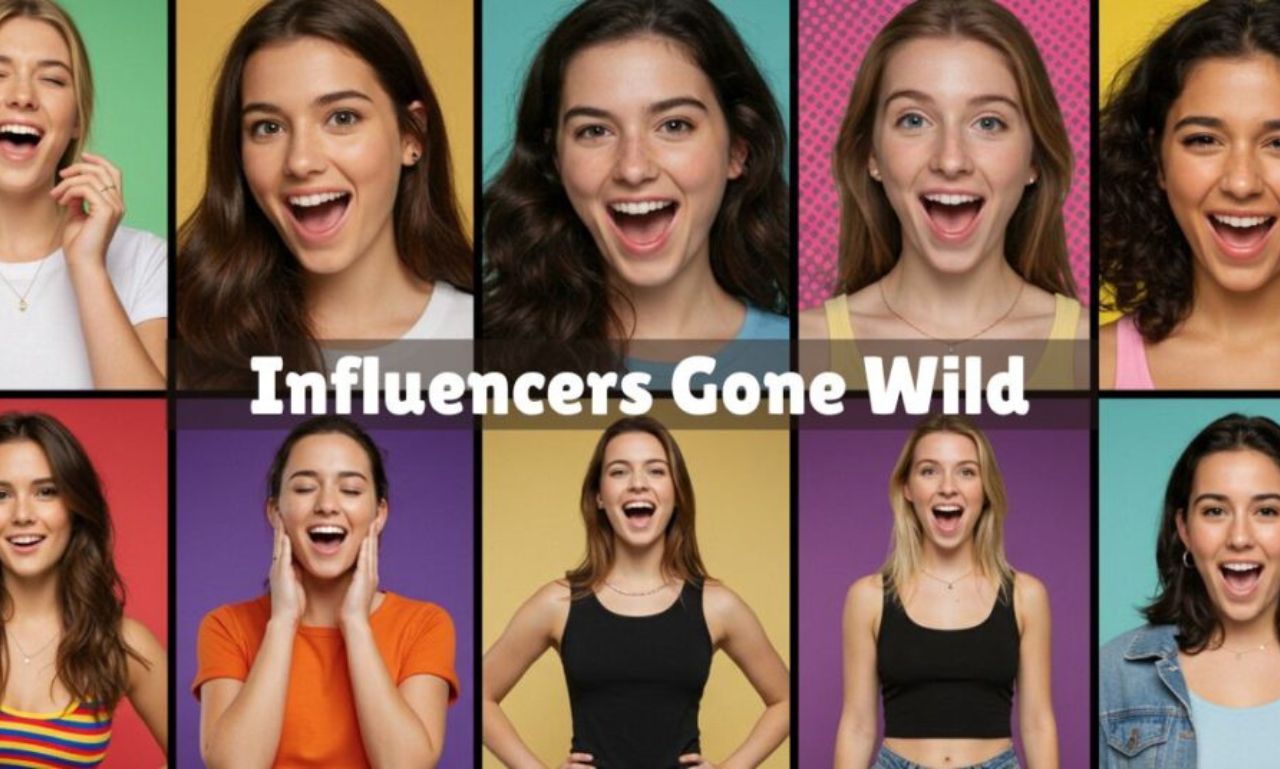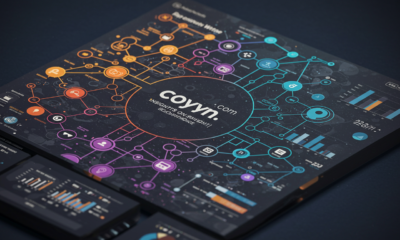Social Media
influencersginewuld: How They Shape Trends and Consumer Behavior

In today’s digital landscape, influencers have become powerful trendsetters, shaping consumer behavior in ways that were unimaginable just a few years ago. With the swipe of a finger or a click on “follow,” millions can be drawn into new lifestyles and shopping habits. But what exactly is this phenomenon called influencersginewuld? As social media platforms grow in popularity, so does the impact of those who wield their influence wisely.
From beauty gurus to fitness enthusiasts and lifestyle bloggers, each influencer brings something unique to the table. They create connections with audiences that traditional advertising simply can’t match. Their recommendations often feel like advice from friends rather than marketing pitches, making them trusted voices in an ever-evolving marketplace.
The rise of these digital personalities has transformed not only how brands engage with consumers but also how individuals perceive trends and product value. Dive deeper as we explore the dynamic world of influencersginewuld and uncover how these modern-day ambassadors are reshaping our buying decisions—and perhaps even our very lives.
What is influencersginewuld?
Influencersginewuld is a term that encapsulates the evolving landscape of social media influencers and their cultural significance. It combines “influencer,” representing those who sway public opinion, with “sinew,” suggesting strength within societal trends.
This concept reflects how influencers have become integral to shaping consumer behavior. They craft narratives that resonate deeply with audiences, creating connections based on trust and relatability.
The rise of digital platforms has amplified this phenomenon. With millions of followers, these individuals wield considerable power in promoting products and ideas.
By harnessing personal stories and authentic engagement, they build communities around shared interests. This unique dynamic alters traditional marketing practices as brands recognize the importance of influencer partnerships in reaching targeted demographics.
In essence, influencersginewuld represents an ongoing transformation where authority shifts from conventional figures to everyday people who share their lives online.
The rise of social media influencers and its influence on consumer behavior
Social media influencers have transformed the marketing landscape dramatically. Once relegated to niche audiences, these individuals now wield power over millions. Their authentic voices resonate with followers, creating a sense of trust that traditional advertisements often lack.
As users scroll through their feeds, they encounter curated lifestyles and products showcased by relatable figures. This connection drives engagement and encourages impulsive purchasing decisions. Followers see items in real-life contexts, making them more appealing than conventional ads.
The immediacy of social media amplifies this influence. Trends can emerge overnight as influencers share their latest finds or experiences with brands. Consumers are drawn to the personal touch and feel part of an exclusive community.
This shift has led brands to rethink strategies entirely, relying on influencer partnerships for wider reach and credibility in saturated markets. The impact is profound—consumers not only buy what they see but also embrace the lifestyles promoted by those they admire online.
Types of influencers and their target audience
Influencers come in various shapes and sizes, appealing to distinct audiences. Each type leverages their unique skills and style to connect with followers.
Micro-influencers typically have between 1,000 to 100,000 followers. They often engage niche markets and cultivate a loyal community. Their audience values authenticity and relatability.
Macro-influencers boast larger followings of up to millions. Brands frequently collaborate with these influencers for broad exposure. However, their engagement rates can vary significantly compared to micro counterparts.
Celebrities bridge the gap between mainstream fame and influencer culture. While they attract vast attention, their connections may feel less personal due to sheer follower numbers.
Then there are niche influencers who focus on specific interests such as beauty or fitness. These experts draw dedicated fans eager for tailored content that resonates deeply with their passions.
Understanding these types helps brands target campaigns effectively while reaching the right audience at the right time.
Case studies of successful influencer marketing campaigns
One standout example of influencer marketing is Glossier. The beauty brand harnessed the power of micro-influencers who genuinely loved their products. By inviting them to share their unfiltered experiences, Glossier created a sense of authenticity that resonated deeply with consumers.
Another notable case is Nike’s collaboration with social media influencers during the launch of its latest sneaker line. Influencers showcased the product through engaging content that highlighted comfort and style while sharing personal stories about fitness journeys.
Then there’s Daniel Wellington, which took a unique approach by partnering with various influencers across different niches. Their simple yet effective strategy involved gifting watches for Instagram posts, generating massive engagement and driving sales worldwide.
These campaigns demonstrate how strategic influencer partnerships can elevate brand visibility and foster genuine connections with audiences, proving that authentic voices can ignite movements in consumer behavior.
The power of influencer endorsements and collaborations
Influencer endorsements wield significant power in shaping consumer perceptions. When a trusted figure shares their experience with a product, followers take notice. Authenticity shines through these endorsements, making them more relatable than traditional advertisements.
Collaborations between brands and influencers amplify this effect. A well-executed partnership can create buzz and excitement around a product launch. The shared creativity brings fresh ideas to the forefront, capturing audience attention.
Moreover, influencers often incorporate products into their daily lives seamlessly. This natural integration helps consumers envision themselves using the item too. It fosters an emotional connection that standard marketing struggles to achieve.
As influencers build niche communities, brands gain access to highly targeted audiences. This strategic alignment often results in higher engagement rates and conversions compared to conventional advertising methods. The combination of trust and relatability makes influencer collaborations invaluable for modern marketing strategies.
Ethical concerns surrounding influencer marketing
The rise of influencer marketing has not come without its ethical dilemmas. Transparency is a major concern. Many influencers fail to disclose paid partnerships, leaving audiences unaware that their endorsements are financially motivated.
This lack of transparency can lead to consumer mistrust. Followers often see influencers as relatable figures, but when they promote products without clear sponsorship indications, the authenticity comes into question.
Additionally, the potential for promoting harmful products is significant. Whether it’s diet pills or unregulated beauty treatments, influencers wield power over their followers’ choices and well-being.
Another pressing issue involves the pressure on influencers themselves. The demand for constant content can lead them to prioritize engagement over ethical considerations, blurring lines between genuine recommendations and mere sales tactics.
As scrutiny increases around these practices, both brands and influencers must navigate this evolving landscape thoughtfully.
The future of influencer culture and its effect on traditional advertising methods
The future of influencer culture looks promising and dynamic. As social media platforms evolve, influencers are finding new ways to engage audiences. Live streaming, interactive content, and virtual reality experiences are on the horizon.
Traditional advertising methods may struggle to compete with this authenticity. Consumers crave genuine connections over polished commercials. Influencers provide that personal touch, often leading to higher engagement rates.
Brands will likely shift budgets away from traditional media toward influencer partnerships. The focus will be on micro-influencers who resonate deeply with niche markets. This approach fosters trust and drives purchasing decisions more effectively than broad campaigns.
As influencers become even more integrated into marketing strategies, transparency will remain vital. Audiences expect honesty about sponsorships and collaborations, pushing brands to prioritize ethical practices in their campaigns.
The landscape is changing rapidly; businesses must adapt or risk falling behind in an increasingly digital marketplace.
Conclusion: the lasting impact of influencers on trends and consumer behavior
The rise of influencers has undeniably transformed the marketing landscape. Their ability to connect with audiences on a personal level shapes trends and influences consumer behavior in profound ways. As brands increasingly turn to these digital personalities for endorsements, they harness not just their reach but also their authenticity.
Influencersginewuld reflects this new paradigm where collaboration between brands and creators is essential. The power of social media platforms amplifies this connection, enabling swift communication and interaction. This dynamic creates a sense of community that traditional advertising struggles to replicate.
As the influencer culture continues to evolve, it brings both opportunities and challenges. Ethical considerations emerge as consumers demand transparency from those they follow. It’s crucial for influencers to maintain trust while navigating partnerships with brands.
Looking ahead, the influence of social media stars will likely keep growing. They are reshaping how we think about brand loyalty and consumer engagement in real-time. Traditional advertising methods may need to adapt or risk becoming obsolete in this ever-changing landscape driven by innovators who lead through authenticity rather than mere promotion.
The lasting impact of influencersginewuld on trends and consumer behavior signifies a shift towards more personalized marketing strategies that prioritize genuine connections over conventional practices.

-

 Business8 months ago
Business8 months agoCoyyn.com Economy | Insights on Gig & Digital Economies
-

 Reviews8 months ago
Reviews8 months agoDelta Touch Faucet Reviews – (Buying Guide 2025)
-
Reviews8 months ago
Kraus Faucet Reviews – (Buying Guide 2025)
-
Reviews8 months ago
Pfister Faucet Reviews – (Buying Guide 2025)
-

 Reviews8 months ago
Reviews8 months agoGlacier Bay Faucet Reviews
-
Reviews8 months ago
Brizo Kitchen Faucet Reviews – (Buying Guide 2025)
-
Reviews8 months ago
Grohe Faucet Reviews – (Buying Guide 2025)
-
Reviews8 months ago
American Standard Colony Soft Pull-Down Review